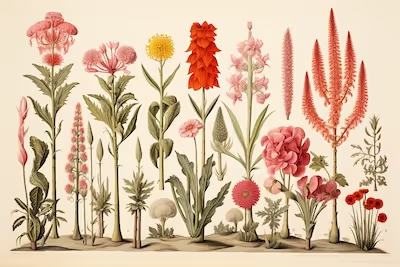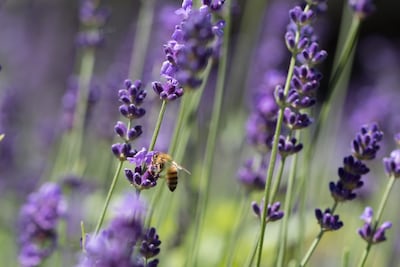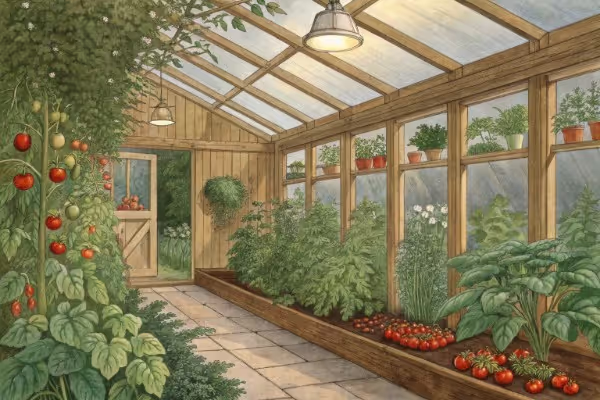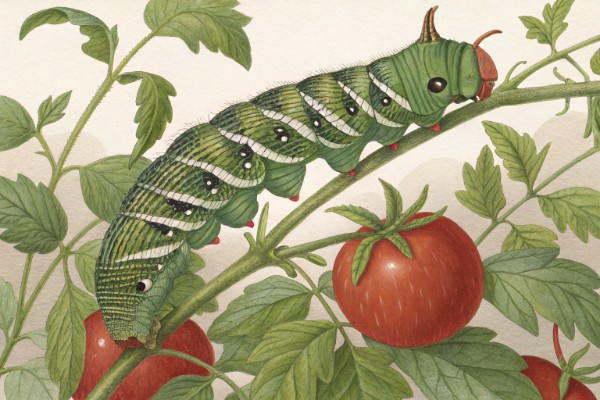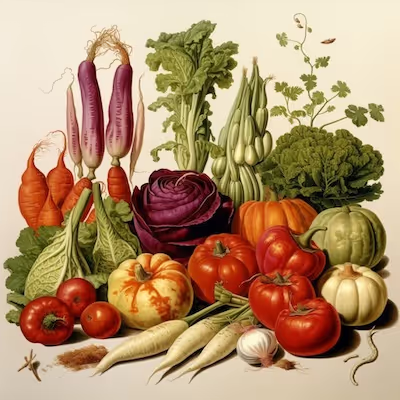What to Plant in July for a Healthy Late-Summer Garden

What to plant in July
Wondering what to plant in July? Sow heat-loving veggies like peppers and zucchini, quick-growing herbs such as basil and cilantro, and vibrant annual flowers—think marigolds and cosmos—for instant color. Knowing exactly what to plant in July promises tasty harvests and brilliant blooms that flourish late into summer; here's how to make your July garden thrive.
Cheatsheet: July Planting for Thriving Late Gardens
🌱 Direct Sow (Outdoor)
- Beans: Bush/snap, harvest in 50-60 days
- Carrots: Fast-maturing (55-70 days); thin to 2 in/5 cm
- Zucchini/Summer Squash: Yields in 50 days
- Beets: Harvest greens in 30 days, roots in 60
- Cucumbers: Choose pickling/slicer types
- Radishes: Ready in 3 weeks; sow every 10 days
- Swiss Chard: Heat-tolerant and nutritious
🌾 Transplant or Start Indoors
- Broccoli: Transplant seedlings for late-summer heads
- Kale: Quick-growing, vitamins A/C/K
- Lettuce: Romaine, butterhead, leaf types; bolt-resistant
- Collards: Use young leaves for highest nutrition
🌻 Herbs & Flowers (Boost pollinators & flavor)
- Basil: Start from seeds/transplants; harvest tips often
- Dill: Direct sow for late-season pickling
- Nasturtium: Edible flowers; attracts pollinators
- Sunflowers: Sow short-season varieties for seed heads
🧊 Heat-Protection Tactics
Mulch heavily (2-3 in/5-7 cm); water early/late day; use shade cloth (30-50%); sow at dusk if >90°F/32°C.
🧰 Tools and Products You'll Need
- Hand trowel
- Watering can with fine rose
- Compost or starter fertilizer
- Row cover or shade fabric
- Mulch (straw, leaves, or grass clippings)
- Quality seeds or seedlings
📝 Steps
- Prep beds: Weed, amend with compost, level soil.
- Sow seeds/transplants: Follow packet depth; space according to crop.
- Water deeply: 1 in/2.5 cm per week; avoid wetting leaves.
- Mulch roots: Retain moisture, suppress weeds.
- Thin seedlings: Prevents crowding for root crops.
- Shade & protect: Use covers for hot/sunny stretches.
- Harvest young: Pick frequently for continuous yields.
🥗 Health & Self-Sufficiency
- One square yard/meter can yield up to 8 lbs/3.6 kg greens by September
- Leafy crops provide calcium, folate, antioxidants
What to plant in July for a healthy late‑summer garden
I treat July like a second spring, just hotter and meaner, and I plant with speed in mind. What to plant in July breaks into fast crops, heat lovers, and fall starters.
Heat strategy that actually works
Figure soil temp at 1 to 2 inches deep first, then sow accordingly. I lean on shade cloth in 30 to 40 percent, thick mulch, and morning irrigation.
“Vegetable gardens need about 1 to 1.5 inches of water per week”
Source: University of Minnesota Extension
“Mulch can reduce soil evaporation by 25 to 50 percent”
Source: USDA NRCS
Fast direct‑sows for late‑summer plates
These jump from seed to bowl before the heat chews them up. I succession‑sow every 7 to 10 days until mid August.
- Arugula 25 to 35 days: sow in afternoon shade or under 30 percent cloth, harvest baby leaves quick.
- Leaf lettuce baby 25 to 35 days: choose heat‑tolerant types like ‘Muir’ or ‘Jericho’ and pre‑chill seed 48 hours.
- Asian greens 30 to 45 days: ‘Komatsuna’, ‘Mizuna’, ‘Tatsoi’ for fast cuts, bolt less with shade.
- Spinach alternatives: Malabar spinach and New Zealand spinach love 80 to 95 F, 27 to 35 C.
- Radishes 25 to 30 days: small batches, irrigate evenly to avoid punchy heat bite and pithiness.
- Bush beans 50 to 60 days: plant short rows weekly, I pick a July 4 sowing in late August in zone 6b.
- Cucumbers 45 to 55 days: pick parthenocarpic types like ‘Diva’ or ‘Excelsior’ for reliable set under cloth.
Lettuce reality check
Lettuce seed enters thermodormancy in hot soil, which stalls germination. I start trays indoors at 60 to 68 F, 15 to 20 C, then transplant tight spacing for baby harvests.
“Temperatures above 80 F, 27 C, can inhibit lettuce germination”
Source: UC Davis Vegetable Research and Information Center
Heat lovers that peak from July sowings
These thrive when the patio feels like a skillet. I start them early in the day so roots settle before the afternoon blast.
- Okra: direct‑sow or transplant, pick daily for tender pods, varieties ‘Jambalaya’ or ‘Clemson Spineless’ pay reliably.
- Southern peas cowpeas: drought‑tough, 60 to 70 days, excellent as a cover crop with dinner on the side.
- Edamame: 75 to 90 days, inoculate with Bradyrhizobium for better nodulation and yields.
- Summer squash: a July planting often dodges vine borer cycles, look for PM‑resistant lines like ‘Dunja’ or ‘Success PM’.
- Basil: sow every 2 weeks, pinch hard, I dry the overflow or blitz pesto and freeze in ice cube trays.
Roots to sow in July for steady crunch
Uniform moisture is the trick with July roots. I use the board method for carrots, then remove it as soon as I see first hooks.
- Carrots 60 to 75 days: quick growers like ‘Napoli’, ‘Adelaide’, ‘Bolero’, keep the top inch moist at 65 to 80 F, 18 to 27 C soil temps.
- Beets 55 to 65 days: soak seed clusters, thin for greens and roots, varieties ‘Early Wonder’ and ‘Boro’ handle heat better.
- Turnips 35 to 50 days: ‘Hakurei’ and ‘Tokyo Cross’ stay sweet in summer if watered well.
- Daikon 50 to 70 days: sow late July into August for crisp roots and superb soil drilling roots.
Flowers that keep pollinators working
Seed color now and your fruits set better. I tuck one row of blooms for every four rows of veg.
- Zinnias and Cosmos: flower in 6 to 8 weeks, endless cuts keep plants pumping.
- Sunflowers: 50 to 70 days for singles, stagger plantings to stretch the show.
- Nasturtium: edible, trails in heat with afternoon shade and steady water.
- Sweet alyssum: lures beneficials that clean up aphids on peppers and cukes.
Herbs to sow or renew in July
Heat turns some herbs into fireworks, in good and bad ways. I work with that rhythm.
- Cilantro: pick slow‑bolt types ‘Calypso’ or ‘Caribe’, harvest baby leaf, then collect green seeds for salsa.
- Dill: sow near cukes for quick pickling sessions, let one plant set seed for swallowtails.
- Shiso perilla: thrives in hot beds and lifts any salad or hand roll.
- Chives and parsley: transplant from pots into morning sun for steady snips.
Start your fall brassicas now
July is prime for nursery trays of broccoli, cabbage, kale, and collards. I germinate at 70 F, 21 C, then harden plants under 40 percent cloth for 5 to 7 days.
Transplant in 3 to 5 weeks with a splash of kelp and compost, then net for cabbage moths. Keep plants moving with light weekly feeding since heat speeds metabolism.
Regional cheat sheet for What to plant in July
Match crop speed to your frost date and nighttime lows. I run this playbook with clients across zones.
- USDA zones 3 to 5: fast greens, radish, baby beets, bush beans, short cucumbers, start brassicas indoors now.
- Zones 6 to 7: beans, cukes, summer squash, okra in warm pockets, carrots under boards, continuous basil, start brassicas in shade.
- Zones 8 to 10: cowpeas, okra, edamame, sweet potato slips early July, tropical spinaches, start brassicas indoors with AC or cool cellar.
- Maritime and cool summers: lettuce and Asian greens shine with light cloth, carrots and beets excel, fall brassicas can be direct‑sown late month.
Water, shade, and soil tactics that save July plantings
Drip or micro sprinklers in early morning beat evaporation and foliar diseases. I target 1 inch, 25 mm, per week and bump to 1.5 inches, 38 mm, during heat waves.
Lay 2 to 3 inches, 5 to 8 cm, of fine wood chips or straw between rows, not piled on stems. Foliar feeding at noon is a rookie move, I keep any sprays to dawn.
“Use 30 to 40 percent shade cloth to reduce heat stress on vegetables”
Source: University of Arizona Cooperative Extension
Pest and disease triage in mid‑summer
Powdery mildew creeps in as nights cool and days stay hot, so choose PM‑resistant cucurbits and space for airflow. I prune lower squash leaves touching soil and water only at the base.
Spider mites flare in dry heat, so I spray with a firm water jet and keep humidity up around plants. For caterpillars on brassicas, I net first then use Bacillus thuringiensis only on active larvae.
Commercial notes, gear, and cultivars I trust
Pick varieties labeled DM, PM, CMV, or HR codes for disease resistance in summer cucurbits. Parthenocarpic cucumbers set fruit under netting or in low pollinator conditions.
- Shade cloth: 30 to 40 percent for greens and brassicas, 20 to 30 percent for fruiting crops in extreme heat.
- Drip kit with pressure regulator and timer, plus goof plugs for quick fixes.
- Inoculant for beans, cowpeas, and edamame to improve nodules and yields.
- Fine seed tools: 3 mm colander for rinsing carrot seed board method, hand vacuum seeder saves time.
- Neem or insecticidal soap for soft‑bodied pests, used at dawn to avoid leaf burn.
My July planting routine, step by step
- Pre‑soak beet and pea‑type seeds for 2 hours, chill lettuce seed 1 to 2 days.
- Water the bed deeply the night before, then sow at sunrise.
- Cover fine seed with vermiculite or a light compost blend for even moisture.
- Lay boards over carrot rows, check twice daily starting day 4.
- Install shade cloth before the first heat spike, not after plants wilt.
- Side‑dress with a light organic fertilizer at first true leaves, then every 2 to 3 weeks.
Top 12 high‑payback choices to plant in July
- ‘Muir’ or ‘Jericho’ lettuce for baby leaf under cloth.
- ‘Speedy’ or ‘Astro’ arugula for peppery cuts in 20 days.
- ‘Provider’ or ‘Mascotte’ bush beans for quick pods.
- ‘Diva’ or ‘Excelsior’ cucumbers, parthenocarpic and clean skinned.
- ‘Dunja’ zucchini with PM resistance and tight internodes.
- ‘Jambalaya’ okra, early and compact.
- ‘Calypso’ cilantro for delayed bolting.
- ‘Napoli’ carrot for a crunchy late August pull.
- ‘Boro’ beet that stays sweet in heat.
- ‘Hakurei’ turnip for crisp, mild bulbs.
- Malabar spinach for climbing greens that laugh at 95 F, 35 C.
- Zinnias ‘Benary’s Giant’ for pollinators and vases.
Troubleshooting July sowings
If seed won’t pop, check soil temps and moisture first, then test seed lot on a damp paper towel indoors. If plants sulk, I cut back nitrogen and focus on steady water and mulch until roots grab.
Field notes and quirks I rely on
I mark a bed for July beans every year because the late crop dodges early aphid waves and tastes cleaner. I also plant a second cucumber patch in July which often outruns diseases the first patch picked up.
More data points worth knowing
“Plant heat‑tolerant lettuce or germinate in cool conditions to avoid thermodormancy”
Source: UC Davis VRIC
“Aim for consistent moisture to reduce stress and bitterness in leafy greens”
Source: Penn State Extension
That lines up with what I see on hot rooftops and tight urban beds. Keep the water honest and the shade smart, and July pays out.

Want smarter plant choices? 🪴
Frequently Asked Questions About July Garden Planting
Which vegetables thrive best when planted in July?
Fast-growing vegetables ideal for July planting include beans, cucumbers, summer squash, carrots, Swiss chard, and radishes. These crops flourish under warm conditions and mature quickly, ensuring a vibrant harvest by late summer.
Can I still plant flowers in July?
Yes, planting heat-tolerant annuals like zinnias, marigolds, cosmos, and sunflowers in July can yield abundant blooms. Choose seedlings or established transplants rather than seeds to gain quicker flowering and vibrant color for your summer garden.
Are herbs suitable for planting during mid-summer?
Many herbs, including basil, cilantro, dill, and parsley, grow vigorously when planted in July. Sow seeds directly in moist, nutrient-rich soil, or use transplants placed in partially shaded areas if temperatures frequently exceed 85°F (29°C).
What watering schedule should I adopt for plants started in July?
Plants established in July require consistent watering to encourage strong root formation and overcome heat stress. Provide approximately 1 to 1.5 inches (2.5 to 4 centimeters) of water weekly, adjusting irrigation frequency based on rainfall and local weather conditions.
Is mulching helpful for July plantings?
Applying a 2 to 3-inch (5-7 cm) layer of organic mulch like straw, shredded bark, or compost helps retain soil moisture, maintain lower soil temperatures, and reduce weed growth—critical factors for healthy plant growth during warm months.
Can I plant leafy greens in July?
Heat-resistant greens like kale, Swiss chard, and collard greens can still thrive if planted in July, especially in regions with moderate summer conditions. Sow these leafy crops in partially shaded areas, providing adequate moisture and organic matter to ensure steady growth.
How do I protect July plantings from extreme heat?
Shield new plantings from intense sunlight by utilizing shade cloth or strategically placing taller crops nearby. Maintain consistent watering routines, mulch thoroughly, and monitor your garden daily to promptly address signs of heat stress.
July isn’t a throwaway month—it's a window for late-summer crops that’ll keep your table and soil thriving. Fast growers like radishes, arugula, and bush beans don’t flinch in the heat, while succession plantings of lettuce and carrots can surprise you with tender harvests into fall. Don’t ignore nutrient-dense vegetables—now’s the time for beets and chard, if you want color and nutrition. Toss in a few microgreens for quick wins and fresh flavor. Water deep, mulch well, and keep an eye on pests—July rewards the grower who pays attention. What to plant in July is about smart choices, not just tradition. The payoff? An abundant, healthy garden that doesn’t quit when the sun’s high and the neighbors’ beds are fading.
The Prepper's Guide to July Planting for Late-Summer Self-Sufficiency
Fast-Growing Crops for Quick Harvests
- Radishes: 25–30 days maturity; edible greens and roots rich in vitamin C.
- Arugula: Harvestable in 30–40 days; provides calcium, potassium and antioxidants.
- Bush Beans: Ready within 50–60 days; excellent protein source, easy preservation by drying.
Nutrient-Dense, Preservation-Friendly Choices
- Swiss Chard: High-yield within 50–60 days; vitamin K packed leaves excellent for canning or freezing.
- Beets: Mature in 50–70 days; iron-rich roots and greens; ideal for pickling and long-term storage.
- Zucchini: Fruit in 45–55 days; magnesium-rich produce suitable for dehydration or freezing.
Heat-Tolerant Crops for Reliable Yield in High Temperatures
- Okra: Thrives above 85°F (30°C); harvest pods continually for ongoing yields; fiber-rich vegetable suitable for pickling, drying or freezing.
- Sweet Potatoes (Slips): Optimal growth between 75–95°F (24–35°C); tuber crop providing generous harvest after 90–120 days, storable up to 6 months.
Essential Seed Banking Tips
Choose open-pollinated and heirloom varieties for sustainable seed saving. Harvest seeds from healthiest mature plants; air-dry seeds completely, store labeled in airtight containers with silica packets to prevent moisture damage. Store below 50°F (10°C) for optimal viability lasting 3–5 years.
Efficient Watering Methods for Resource Conservation
Employ drip irrigation or olla irrigation pots buried near plant roots. Mulch beds with straw or shredded leaf mulch, reducing evaporation by up to 70% and suppressing weeds.
Find out which plants will thrive in your garden!
Answer a few fun questions and get custom plant recommendations perfect for your space. Let’s grow something amazing together!

start your season
